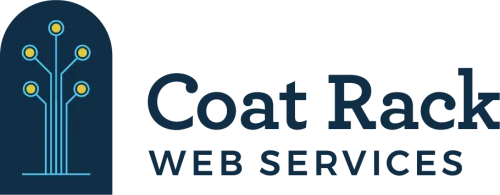September 30, 2024
In the fast-paced world of nonprofits, achieving growth and operational efficiency hinges on aligning business processes with organizational goals. By integrating business process alignment into their strategic initiatives, nonprofits can optimize resources, enhance donor engagement, and streamline technical operations. This approach not only strengthens organizational performance but also amplifies their mission's impact.
This blog will discuss why business process alignment is a critical step before embarking on any operational efficiency or, really any, technical project. It will also provide insights into how to incorporate business process alignment as a key nonprofit strategy.
Maximizing Non-Profit Growth Through Business Process Alignment
Growth requires that processes be put in place for strategic steps that used to be "understood" informally between the founders of an organization. In the early stages, leaders often manage tasks like the writing of grant applications and fundraising initiatives. However, as the organization grows, it becomes crucial for all members of the organization to understand how to implement the nonprofit strategy. This ensures that every operational activity, from fundraising to program delivery, aligns with the overall mission.
Growth also necessitates selecting technical tools that meet the nonprofit strategy needs and facilitate efficient business processes. Implementing these tools, in a way that streamlines operations, requires business process alignment to ensure that each task, or process, integrates with the system.
Donor Engagement Through Process Alignment
One of the most critical areas where business process alignment can make a difference is in donor engagement. Donor engagement is the lifeblood of nonprofits; donor satisfaction and continued support are crucial. Aligned processes can enhance how nonprofits interact with donors, leading to increased donor engagement and retention.
Effective donor management goes beyond simply acknowledging donations. It requires a strategic approach to communication, relationship-building, and appreciation. For example, integrating a customer relationship management (CRM) system into business processes allows nonprofits to manage donor engagement more efficiently. What starts as simple thank-you notes can evolve with automated newsletters, referral campaigns and more. As an organization grows, these tasks must scale, requiring automation with the Customer Relationship Management system (CRM) and partnerships with distribution services.
Operational Efficiency with Aligned Processes
Operational efficiency is another major benefit of business process alignment. Nonprofits often have limited resources, so using them efficiently is vital. Business process alignment helps eliminate redundancies, streamline workflows, and reduce operational costs.
However, it's common for technical systems to dictate what the business processes are, leading employees to create workarounds that become ingrained. Over time, these faulty processes hinder operational efficiency. Documenting day-to-day processes can reveal inefficiencies, making it clear where improvements are needed. For instance, manual tasks like processing donations may not scale as the organization grows. Revisiting strategic goals and business processes regularly, and aligning them with technical updates ensures ongoing improvements in operational efficiency.
Nonprofit Strategy in Aligning the Business
Aligning business processes with strategic goals requires a deliberate and strategic approach. This is often referred to as Business Process Modeling (BPM) which involves evaluating current processes, identifying areas for improvement, and making iterative changes to support organizational objectives. Here's how business process alignment can be incorporated into a nonprofit strategy:
- Define Clear Objectives: Establish specific, measurable, achievable, relevant, and time-bound (SMART) goals. These objectives lay the foundation for aligning business processes.
- Assess Current Processes: Review existing processes to determine how well they support the strategic goals. Identify any gaps, inefficiencies, or misalignments that need to be addressed.
- Develop a Process Alignment Plan: Create a plan to align processes with nonprofit strategy goals. This may involve redesigning workflows, implementing new technologies, or reassigning responsibilities. Ensure that the plan is actionable, with clear timelines, resources, and key performance indicators (KPIs).
- Implement Changes: Execute the alignment, step by step. Communicate changes to staff, provide training as needed, and ensure that new processes are integrated smoothly into daily operations.
- Monitor and Adjust: Continuously monitor the effectiveness of aligned processes. Use KPIs and feedback to assess performance and make adjustments as needed. Regularly reviewing and refining processes ensures that they remain aligned with evolving goals.
- Foster a Culture of Alignment: Cultivate a culture that values process alignment and continuous improvement. Engage staff at all levels in the alignment process and emphasize the importance of aligning daily activities with organizational goals.
By following these steps, nonprofits can create a more cohesive and efficient organization. Business process alignment helps ensure that every aspect of the organization contributes to its nonprofit strategy goals, ultimately enhancing overall effectiveness, operational efficiency, and impact.
At Coat Rack, we specialize in helping nonprofits implement business process modeling initiatives and governance processes that foster a Culture of Alignment. Whether you're looking to improve donor engagement, integrate new systems,or build a custom application project, we can support you in creating solutions that drive meaningful results.
We highly recommend incorporating business process alignment into all strategic initiatives, to ensure impactful projects are fully integrated with current operations and prepared for future growth.
If you're ready to transform your technology solutions and processes, schedule a free consultation with us today and discover how we can help you achieve your mission effectively.



